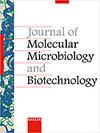Methanogenic Hydrocarbon Degradation: Evidence from Field and Laboratory Studies
IF 1.2
Q2 Biochemistry, Genetics and Molecular Biology
引用次数: 47
Abstract
Microbial transformation of hydrocarbons to methane is an environmentally relevant process taking place in a wide variety of electron acceptor-depleted habitats, from oil reservoirs and coal deposits to contaminated groundwater and deep sediments. Methanogenic hydrocarbon degradation is considered to be a major process in reservoir degradation and one of the main processes responsible for the formation of heavy oil deposits and oil sands. In the absence of external electron acceptors such as oxygen, nitrate, sulfate or Fe(III), fermentation and methanogenesis become the dominant microbial metabolisms. The major end product under these conditions is methane, and the only electron acceptor necessary to sustain the intermediate steps in this process is CO2, which is itself a net product of the overall reaction. We are summarizing the state of the art and recent advances in methanogenic hydrocarbon degradation research. Both the key microbial groups involved as well as metabolic pathways are described, and we discuss the novel insights into methanogenic hydrocarbon-degrading populations studied in laboratory as well as environmental systems enabled by novel cultivation-based and molecular approaches. Their possible implications on energy resources, bioremediation of contaminated sites, deep-biosphere research, and consequences for atmospheric composition and ultimately climate change are also addressed.产甲烷烃降解:来自野外和实验室研究的证据
微生物将碳氢化合物转化为甲烷是一个与环境相关的过程,发生在各种电子受体枯竭的栖息地,从油藏和煤层到受污染的地下水和深层沉积物。产甲烷烃降解被认为是储层降解的主要过程,是形成稠油和油砂的主要过程之一。在没有外部电子受体如氧、硝酸盐、硫酸盐或铁(III)的情况下,发酵和产甲烷成为主要的微生物代谢。在这些条件下,主要的最终产物是甲烷,而在这个过程中维持中间步骤所必需的唯一电子受体是二氧化碳,它本身就是整个反应的净产物。本文综述了产甲烷烃降解研究的现状和最新进展。描述了涉及的关键微生物群和代谢途径,并讨论了在实验室研究的产甲烷烃降解种群的新见解,以及通过新的基于培养和分子的方法实现的环境系统。它们对能源资源、污染场地的生物修复、深层生物圈研究以及对大气成分和最终气候变化的影响可能产生的影响也被讨论。
本文章由计算机程序翻译,如有差异,请以英文原文为准。
求助全文
约1分钟内获得全文
求助全文
来源期刊

Journal of Molecular Microbiology and Biotechnology
生物-生物工程与应用微生物
CiteScore
3.90
自引率
0.00%
发文量
0
审稿时长
>12 weeks
期刊介绍:
We are entering a new and exciting era of microbiological study and application. Recent advances in the now established disciplines of genomics, proteomics and bioinformatics, together with extensive cooperation between academic and industrial concerns have brought about an integration of basic and applied microbiology as never before.
 求助内容:
求助内容: 应助结果提醒方式:
应助结果提醒方式:


